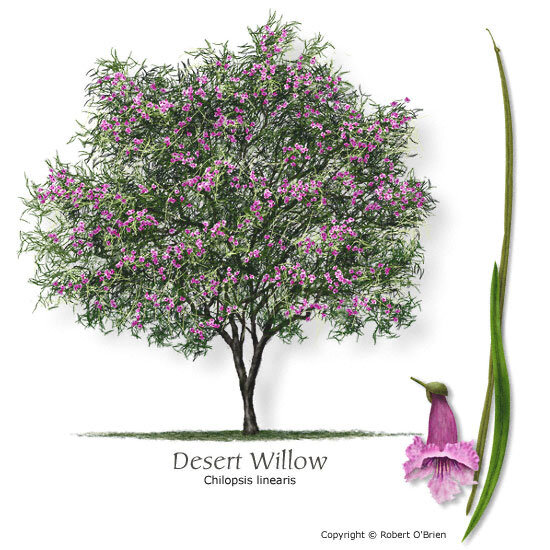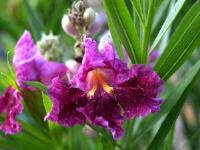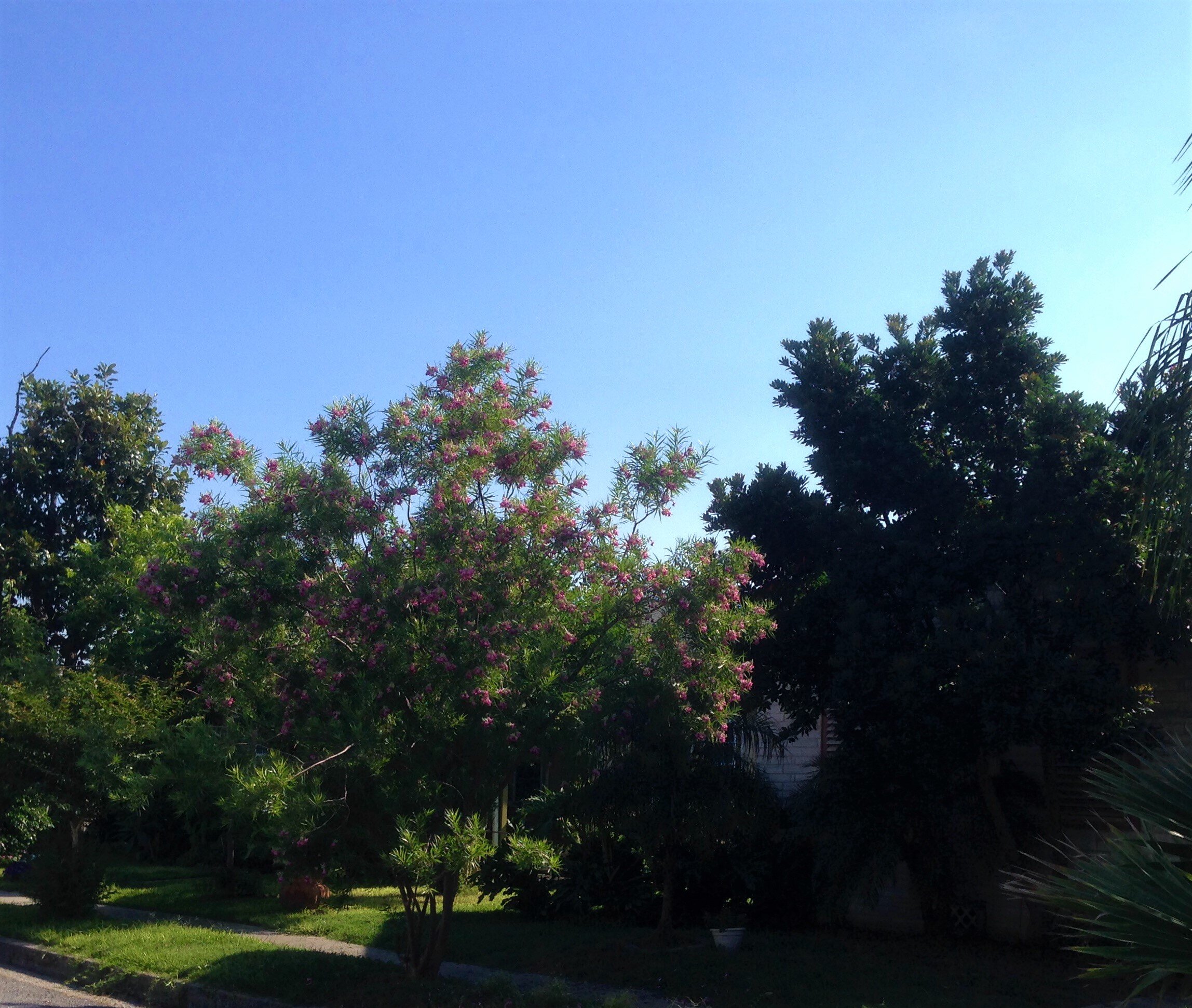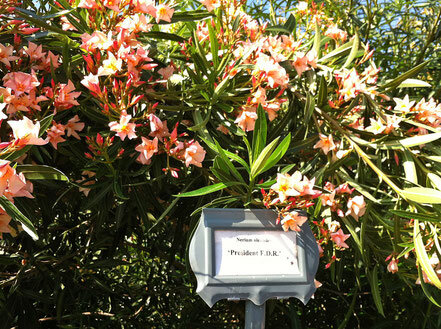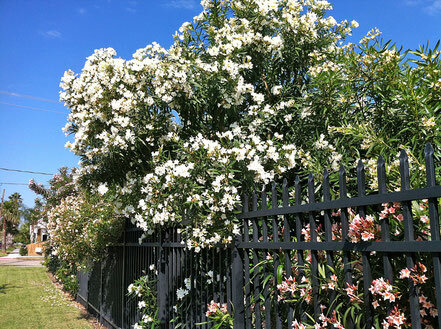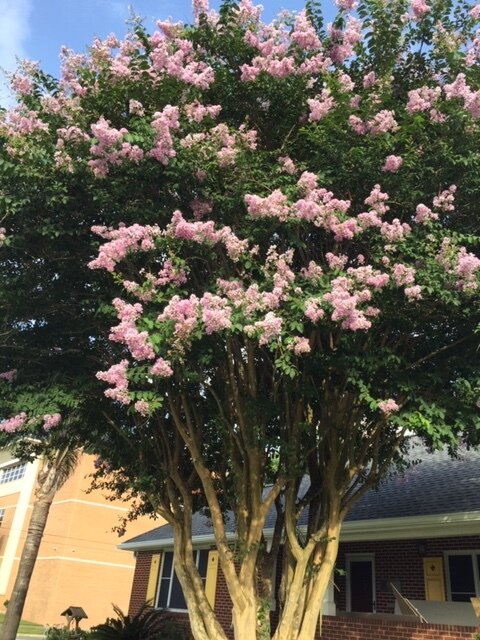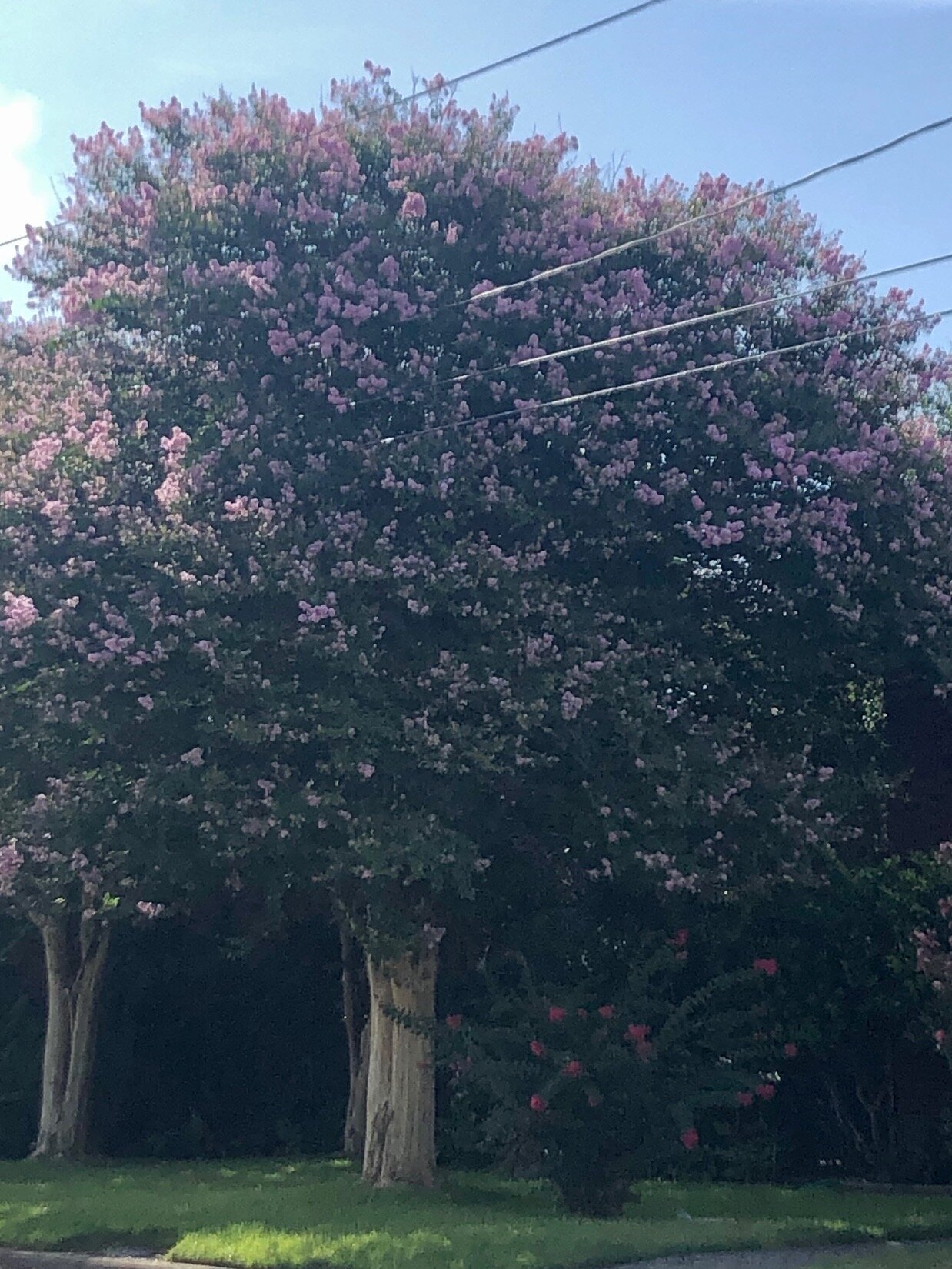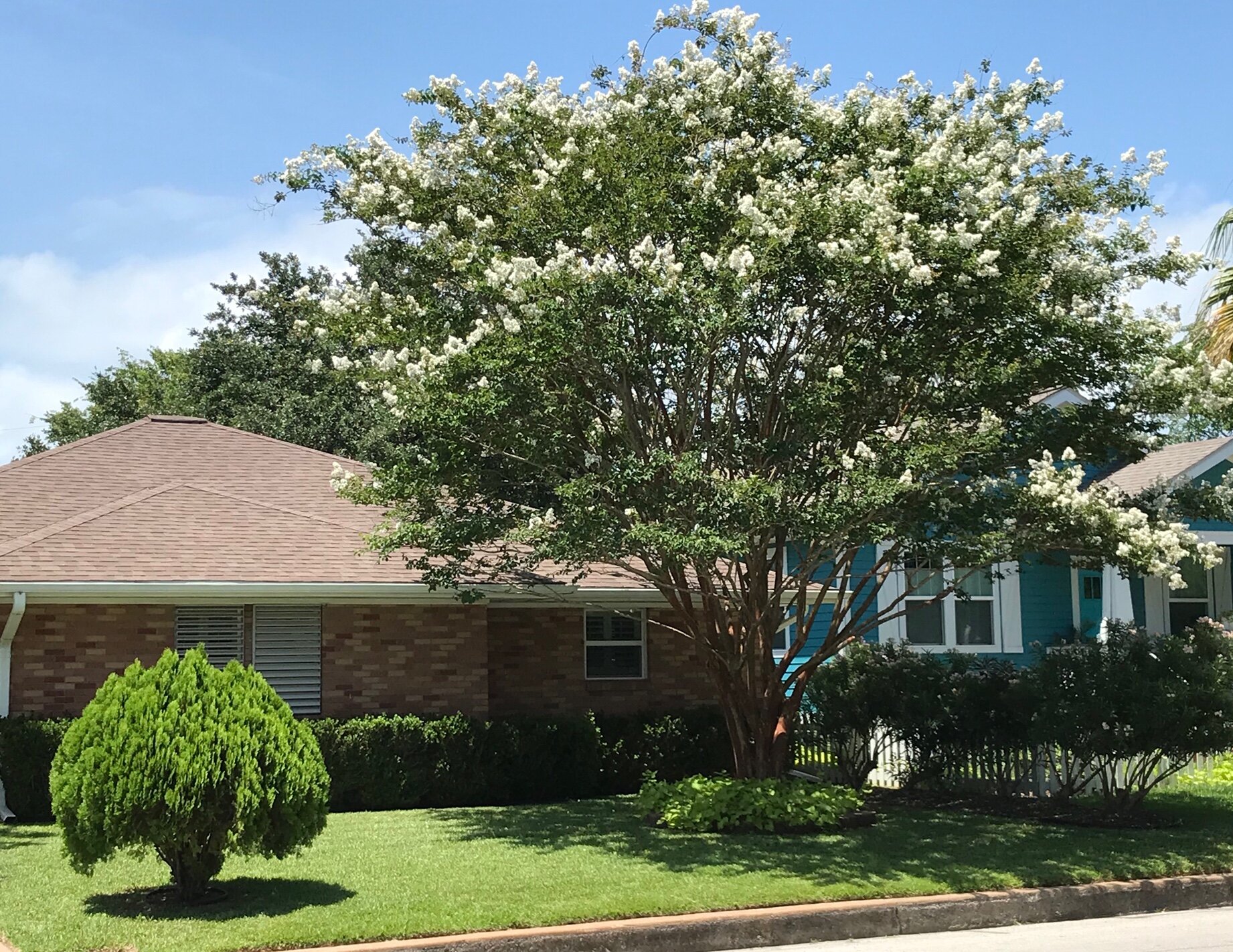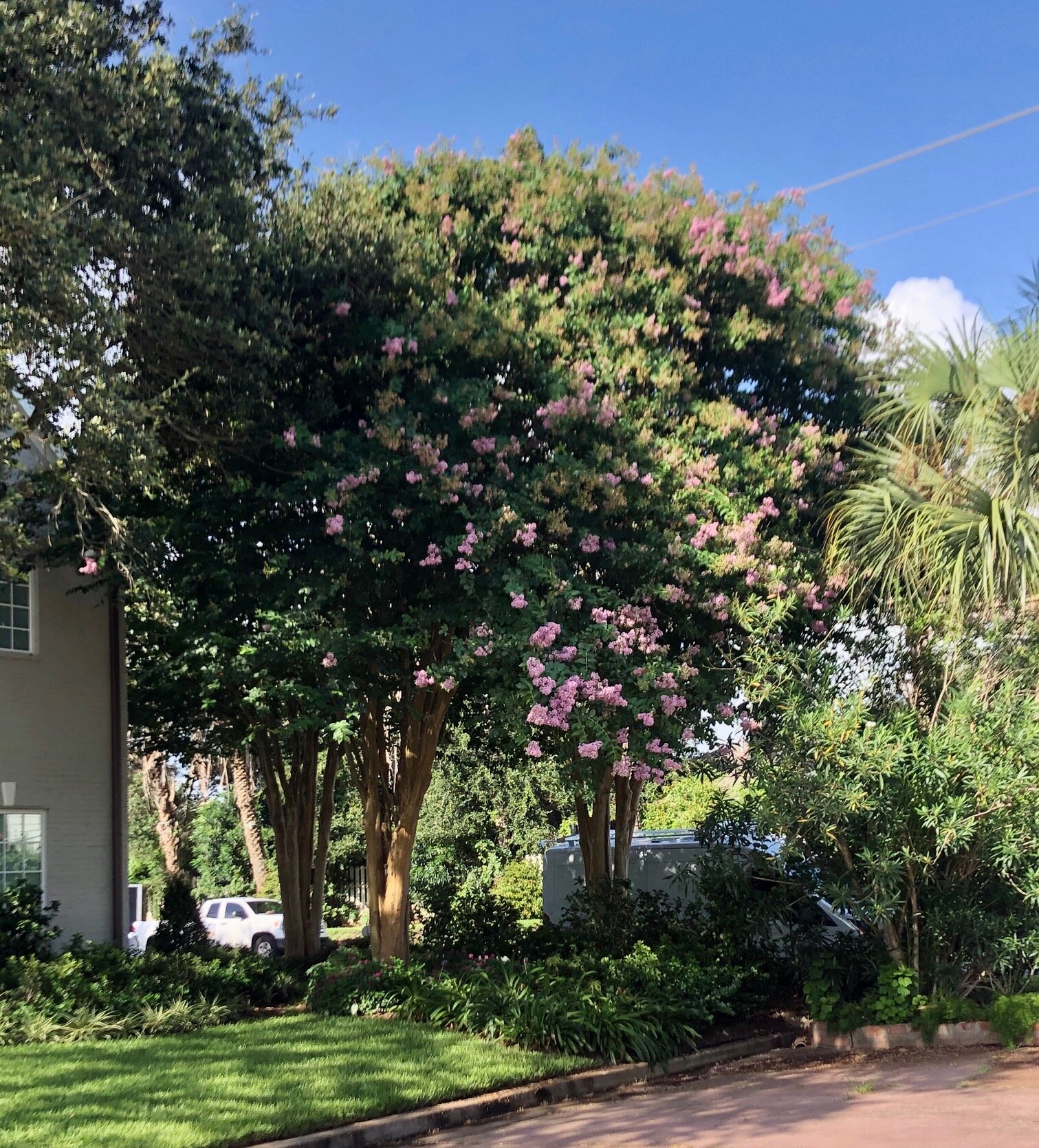Bloomin’ HOT
Tree Stories: It’s bloomin’ hot! Summer Blossoms on the Island
Hot Island summers are the price we pay for living in paradise. At least the warmth is accompanied by summer-blooming trees. Below are some notable examples, all small trees which can easily grace a small yard or patio, or be safely planted under power lines. You need one in your home landscape!
Wild Olive (Cordia boissieri). This favorite south Texas native sports stunning funnel-shaped white flowers beginning in May and continuing almost all year. It is semi-evergreen and cold hardy to about 20-degrees. This tree prefers full sun or partial shade on well-drained soils. Once established it is heat and drought tolerant with few insect and disease problems. Butterflies and bees visit flowers for the pollen, and birds and other small animals consume the “olives”. This beauty can be trained to one trunk for use near walks and patios where clearance beneath the canopy is needed, or grown in a shrubbier form with several trunks. These can be seen on many streets around town, mostly planted during NeighborWoods events.
Desert Willow (Chilopsis linearis). This tough Texas native is blooming abundantly these days with showy clusters of trumpet-shaped, sweetly fragrant pink to violet flowers. They are common highway plantings in arid regions and need little irrigation, but rainy spells bring on the blooms. It enjoys the sun and has very high heat tolerance but can also handle cold to 10 degrees F. It adapts to many soil types, needs little water or fertilizer, and lacks major pests or diseases. Blossoms attract butterflies, hummingbirds, and other pollinators, and seeds provide a food source for birds. Despite a delicate appearance, its tolerance of drought and heat, ease of maintenance, and rapid growth, along with its attractive flowers and long flowering period, make it one of our best small native trees. There is a mature tree, covered with blooms, on the 1500 block of 37th Street.
Oleander (Nerium oleander). This ubiquitous Galvestonian is found on just about any block in town. Maintained as small trees or shrubs trees, these near-bulletproof plants make Galveston the “Oleander City” by providing a blanket of color for months. Oleanders are often underappreciated but with minimal care these tough survivors will add beauty to our landscape all summer long. Be sure to visit the International Oleander Society’s garden at 2624 Sealy to see a wide variety of cultivars. Unfortunately, a relatively new threat on the Island is bacterial leaf scorch. This fatal disease browns leaves and ultimately kills the plant. Removal of the plant is the only option at this time so if you see signs of it get advice right away.
Crapemyrtle (Lagerstroemia species). Last but definitely not least, this tree was featured last column. These beauties need minimal maintenance and there is a size and color for every space. Watch for winners of the “Great Crapes” contest soon.
It’s too hot to plant now, but once fall weather arrives, be sure to add one of these to your landscape! You’ll be glad you did.
Hurricane Ike caused the loss of 40,000 trees on Galveston Island. The Galveston Island Tree Conservancy was formed to address that loss and to date has replaced almost 20,000 through grant-funded plantings and giveaways, with more planned. “Tree Stories” is an ongoing series of articles intended to bring attention to outstanding Island trees and tree care. If you have or know of a special tree on Galveston Island that should be highlighted, please email treesforgalveston@gmail.com.
Margaret Canavan is a Galveston resident, a Certified Master Gardener, and a member of the Board of the Galveston Island Tree Conservancy.





